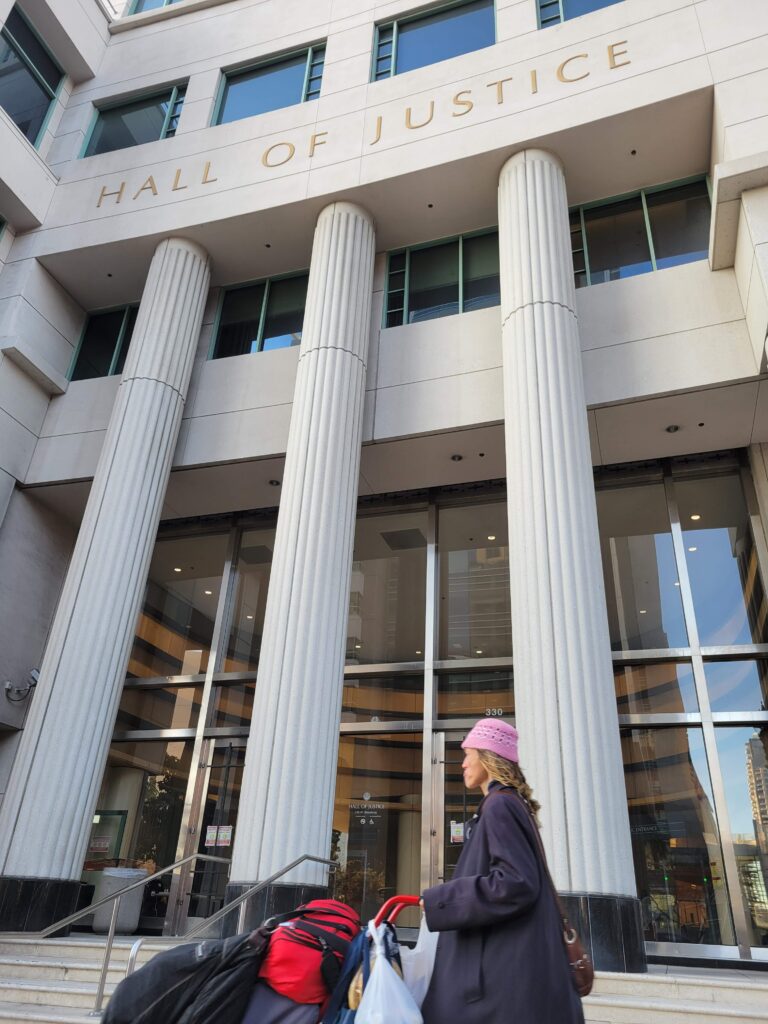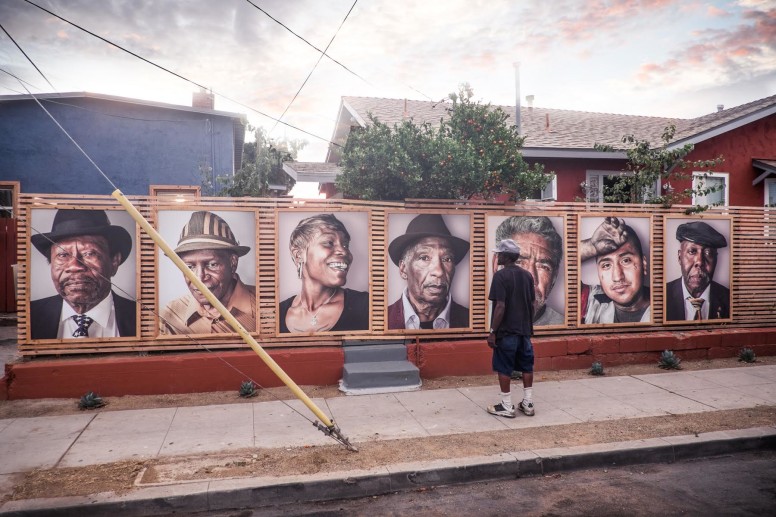Mending the Fabric of Community: Breaking the Cycle of Incarceration and Homelessness
Eddie Meyerholz | March 1, 2022

A few years ago, we took in a neighbor who fell on hard times. She had lost her housing in a rental scam, days before she was scheduled to have knee-replacement surgery. We let her stay with us during her recovery until she could find a new place to live. At first, we assumed her situation was simply circumstantial – bad timing followed by bad luck. But this was the beginning of a downward spiral for our friend Shay. She was in and out of subsidized housing, rooms with friends, motel rooms, and living on the streets. She had spent time in jail, but she never talked about it. Shay was outgoing and motivated, she was street smart, and she had no shortage of ideas on how to get her life back on track, be it new business ideas or learning new job skills. But she was never able to get back on track, as job opportunities and lease agreements seemed to never work out. In hindsight, I think one of her biggest challenges stemmed from having a criminal record.
A Vicious Cycle
Shay’s situation was not unlike others who’ve experienced homelessness, had difficulty securing housing or employment, or who live with the effects of a criminal record. A report by the Prison Policy Initiative reveals several vulnerabilities among the formerly incarcerated, specifically among women and people of color. Their research shows that unemployment is five times higher among incarcerated individuals than the general population. Job security is an issue, where many people who are able to find work have jobs that are unstable or only part-time. Housing and employment discrimination is also a challenge due to exclusionary application processes. These challenges mean that formerly incarcerated people are more vulnerable to homelessness.

While the formerly incarcerated are vulnerable to homelessness, homeless individuals are also vulnerable to incarceration. A study by the Connecticut Coalition to End Homelessness identified a significant link between homeless individuals and people with a history of incarceration. The research found that 69% of formerly incarcerated individuals were homeless prior to being incarcerated. The study also determined that those individuals were often incarcerated for minor offenses, which is an indication of what the Coalition calls “pervasive criminalization of homelessness.” In many cities it’s not uncommon for unsheltered individuals to be cited for low level crimes like loitering, sleeping, urinating, panhandling or otherwise occupying or blocking public spaces and rights-of-way.
The relationship between incarceration and homelessness limits possibility for those caught in this vicious cycle. But it also poses opportunities for social justice through policy change, investment strategies, and transforming how we approach the homeless problem.
Inclusionary policies for social change
There is an unshakable stigma that surrounds both formerly incarcerated people and the homeless, and often this stigma permeates our culture. Criminal records can have a cascading effect on a person’s economic security and family stability through discrimination in employment, education, and housing. Statistics show that 70 million people in the U.S. are living with a current or past criminal conviction, and unemployment among formerly incarcerated is five times higher than the general population. Analysis also shows that people of color experience additional disadvantages when it comes to finding jobs because of stereotyping and race discrimination.
In California, the advocacy group Time Done raises awareness around the challenges and legal barriers faced by people with convictions. They are making efforts to address employer discrimination by lobbying for the passage of state legislation that protects the formerly incarcerated, including:
- California’s SB 731 would permanently seal conviction and arrest records for incarcerated individuals within 2 years of completing their sentence.
- The Fair Chance Act of 2018, commonly known as Ban the Box, prohibits employers from asking job candidates about their conviction history before making them a job offer.
- Senate Bill SB 118 improves access to college education by restricting CA colleges from inquiring about criminal records. Statistics show that “two-thirds of college applicants who have a conviction history do not finish college applications after they get to the criminal history question.”
Increased investment, starting with the most vulnerable
Recent policy aimed at minimizing the sentences for non-violent criminals, calls for divestment in the criminal justice system, and reinvestment in social programs represent promising new directions. A bill currently being considered by the California State Assembly (AB 328) redirects money from the Department of Corrections and Rehabilitation to a new program called “Reentry Housing and Workforce Development,” which helps incarcerated individuals reenter society. According to one estimate, “It costs over 90,000/year to incarcerate someone in California; (in contrast) providing housing with supportive services costs about $20,000.” Additional research shows that incarcerated women, especially women of color are significantly more vulnerable to homelessness and unemployment than men, and they are less likely to have a high school diploma. Gender specific programs like A New Way of Life Reentry Project is a successful model that aids specific women’s issues like assistance with housing, trauma-informed interventions, and family reunification for mothers. Programs like these will not only support the women with immediate needs, but also the children who rely on these women as role models.
Changing Our Approach
In places where the general public interact with unhoused individuals, issues such as sanitation, public indecency, and safety are valid concerns that should be addressed. It is understandable that business districts, chambers of commerce, and even public health advocates who are concerned about health and safety would want to limit the number of homeless from busy and thriving public spaces. But it’s important to find alternatives to law enforcement, ones that don’t contribute to the vicious cycle of homelessness and incarceration.
Punishing people for sleeping on a sidewalk does little to solve the problem, and creates disproportionate negative consequences for those individuals. Fines that go unpaid, jail time, loss of possessions, criminal records, and court cases compound their challenges to secure a job and a home, to treat mental health issues, and ultimately their ability to integrate back into society. It also adds excess burden to every system involved, from law enforcement, public health systems, homeless outreach organizations, our courts, and our jails. A 2018 United Nations report on poverty reveals the negative effects of criminalizing the homeless, and it also reveals how our criminal justice system perpetuates poverty. Re-thinking solutions that combine efforts of enforcement and social rehabilitation, in the form of in-house substance abuse programs for example, would be a win-win for some of the more challenging homeless issues like drug and alcohol addiction.
According to HUD’s 2020 Annual Homeless Assessment Report, homelessness has increased nationwide for the fourth consecutive year. There have been a variety of solutions proposed to alleviate the crisis, from creating homeless task forces, to implementing affordable housing initiatives, offering drug addiction and mental health assistance, to increasing police enforcement. Despite the myriad of efforts, many places have seen an increase in homelessness, and it’s expected to get worse as a result of the pandemic.
As a budding landscape planner, one of the best things I can do is be a voice for those who are unappreciated or forgotten. Sharing community values through public art such as this neighborhood photo display, is a great way to recognize the everyday folks that make up the fabric of our communities, get to know one another, and also challenge our misconceptions about the unhoused.

Homelessness is not something that only happens to other people, but it happens to people that we know and love, sometimes in unsuspecting ways, like it did with my friend Shay. Unfortunately, Shay died a few years after her first stay with us. She loved to help others that were less fortunate, and I’m happy that I could do the same for her when she was in need. She was loved by many.

Eddie Meyerholz is a graduate student in the Master of Landscape Architecture program at Cal Poly Pomona. His work explores connecting native habitats with urban corridors, bringing outdoor opportunities into marginalized communities, and encouraging new ways to balance environmental protection with development.